HOW TO DETERMINE IF THE ORDERED PAIR IS A FUNCTION
Subscribe to our ▶️ YouTube channel 🔴 for the latest videos, updates, and tips.
If each input associates with one output, then it is a function.
In the given set of ordered pairs, by drawing the arrow diagram, we can easily find whether the set of ordered pair is a relation or not.
Consider the following examples,
1) {(a, 1) (b, 1) (b, 3)}
2) {1, a) (2, b) (3, a)}
By drawing arrow diagram, we get
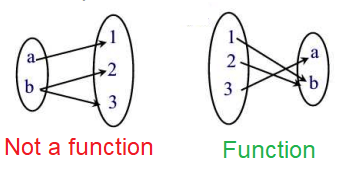
Tell whether
the relation is a function. Explain.
Problem 1 :
(3, -2), (0, 1), (1, 0), (-2, -1), (2, -1)
Solution :
Given, (3, -2), (0, 1), (1, 0), (-2, -1), (2, -1)
Let X be the set of inputs and Y be the set of outputs.
Inputs (X) = {3, 0, 1, -2, 2}
Outputs (Y) = {-2, 1, 0, -1, -1}
Create a mapping of the following relation,
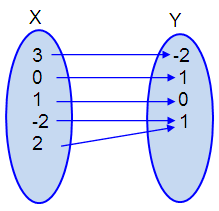
Form the arrow diagram, we understand that each x – value is being paired with only one y – value. So, it is a function.
Problem 2 :
(2, -5), (-2, 5), (-1, 4), (-2, 0), (3, -4)
Solution :
Given, (2, -5), (-2, 5), (-1, 4), (-2, 0), (3, -4)
Let X be the set of inputs and Y be the set of outputs.
Inputs (X) = {2, -2, -1, -2, 3}
Outputs (Y) = {-5, 5, 4, 0, -4}
Create a mapping of the following relation,
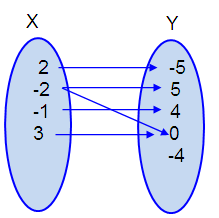
By observing
the arrow diagram, one of the input has more than one output. So, it is not a
function.
Problem 3 :
(0, 1), (1, 0), (2, 3), (3, 2), (4, 4)
Solution :
Given, (0, 1), (1, 0), (2, 3), (3, 2), (4, 4)
Let X be the set of inputs and Y be the set of outputs.
Inputs (X) = {0, 1, 2, 3, 4}
Outputs (Y) = {1, 0, 3, 2, 4}
Create a mapping of the following relation,
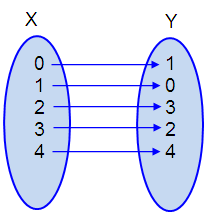
From the
arrow diagram, we understand that each x – value is being paired with only one
y – value. So, it is function.
Problem 4 :
(-1, -1), (2, 5), (4, 8), (-5, -9), (-1, -5)
Solution :
Given, (-1, -1), (2, 5), (4, 8), (-5, -9), (-1, -5)
Let X be the set of inputs and Y be the set of outputs.
Inputs (X) = {-1, 2, 4, -5, -1}
Outputs (Y) = {-1, 5, 8, -9, -5}
Create a mapping of the following relation,
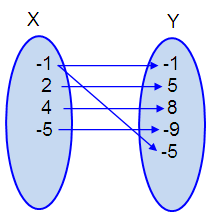
By observing
the arrow diagram, one of the input has more than one output. So, it is not a
function.
Problem 5 :
The relation given by the ordered pairs (-6, 3), (-2, 4), (1, 5), and (4, 0) is a function. Which ordered pair can be included with this relation to form a new relation that is also a function?
A. (1, -5) B. (6, 3) C. (-2, 19) D. (4, 4)
Solution :
In options A, B and D, the first elements are 1, 6 and 4. Since it is already having outputs, by taking one of the options we will not get the function.
Option C :
By connecting the ordered pair (6, 3) with the question, we can make the relation as function.
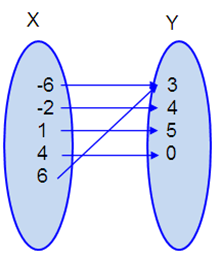
Each input
value is paired with only one output value.
So, it is a function.
Subscribe to our ▶️ YouTube channel 🔴 for the latest videos, updates, and tips.
Recent Articles
-
Finding Range of Values Inequality Problems
May 21, 24 08:51 PM
Finding Range of Values Inequality Problems -
Solving Two Step Inequality Word Problems
May 21, 24 08:51 AM
Solving Two Step Inequality Word Problems -
Exponential Function Context and Data Modeling
May 20, 24 10:45 PM
Exponential Function Context and Data Modeling